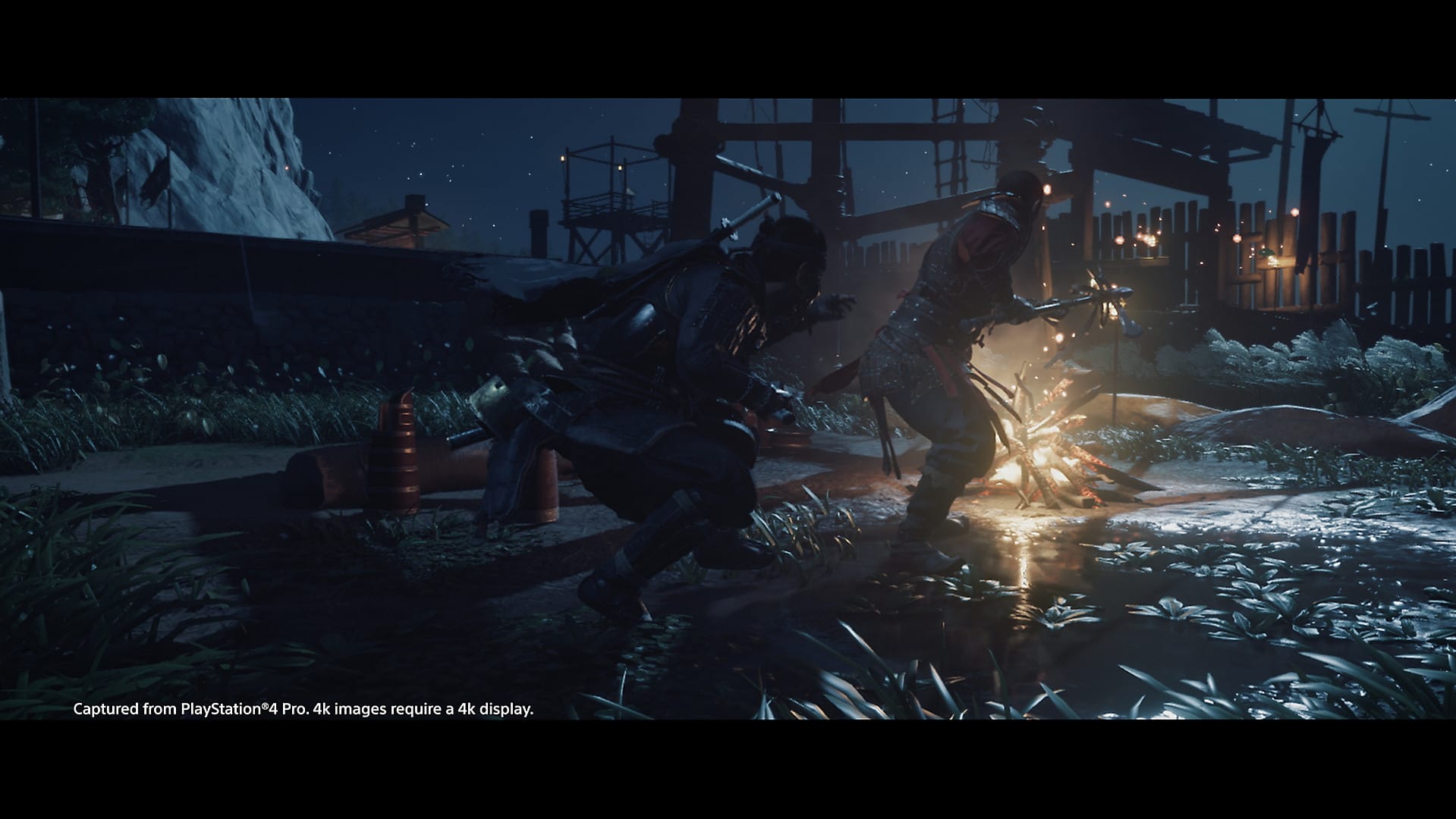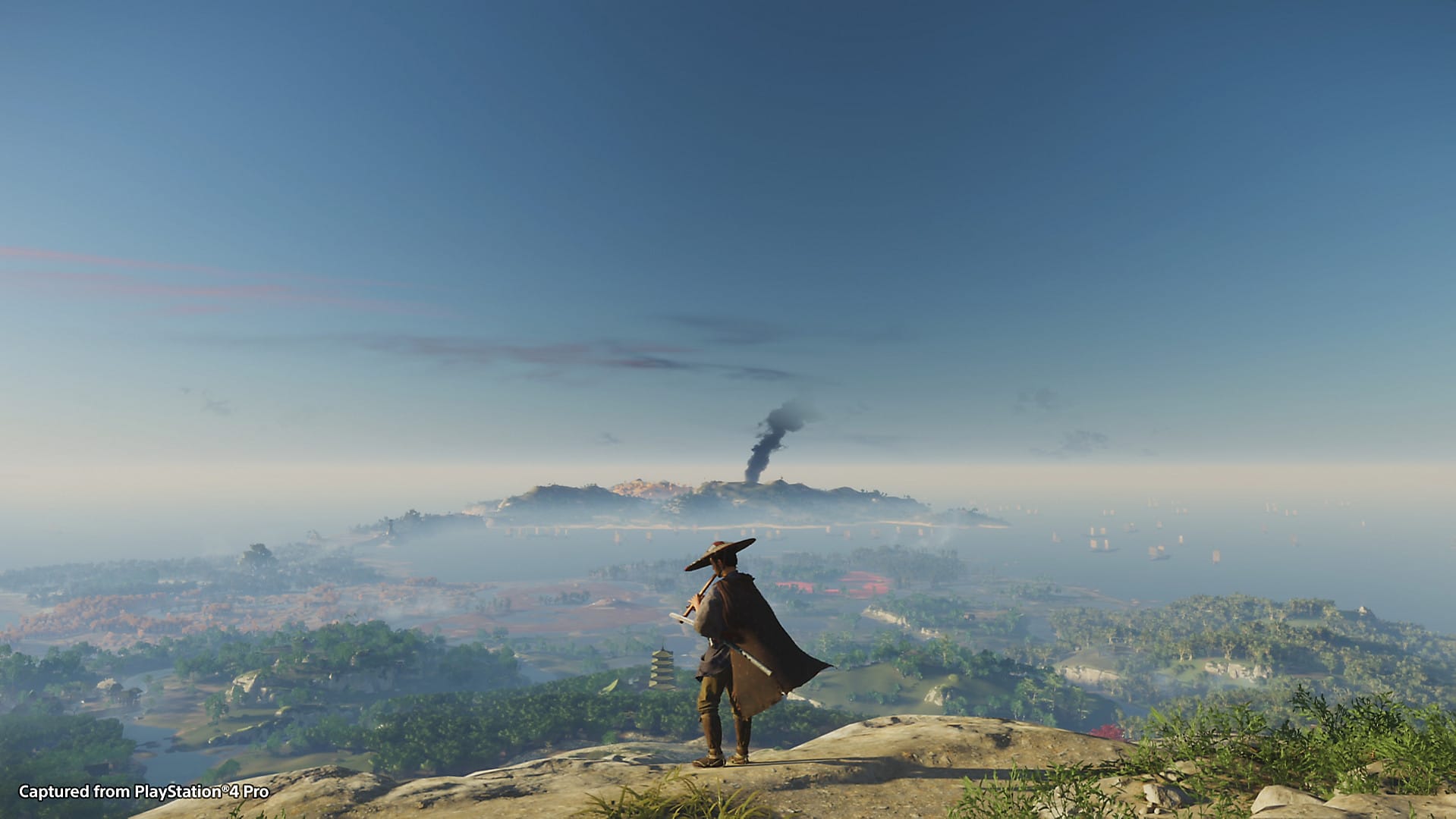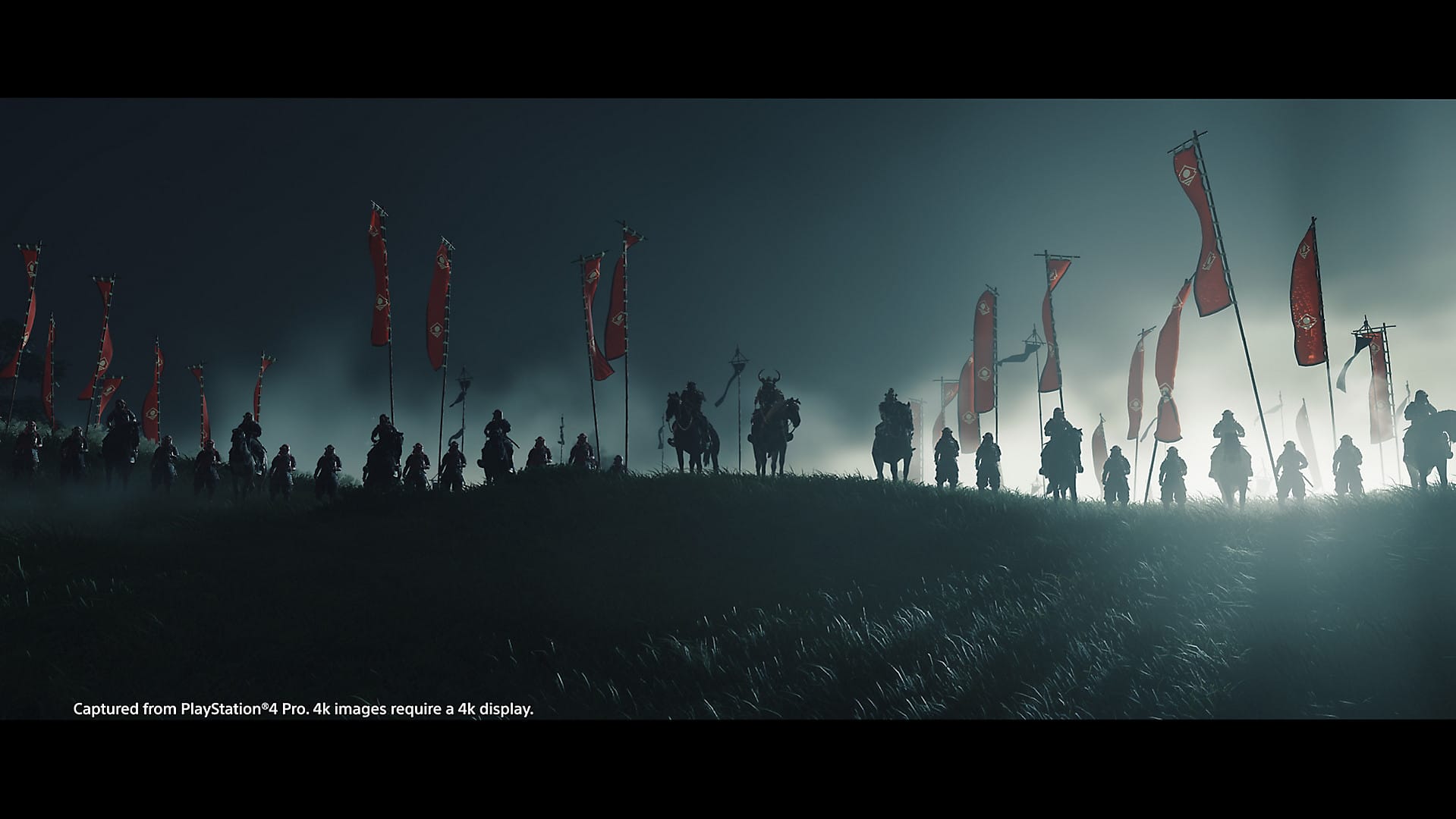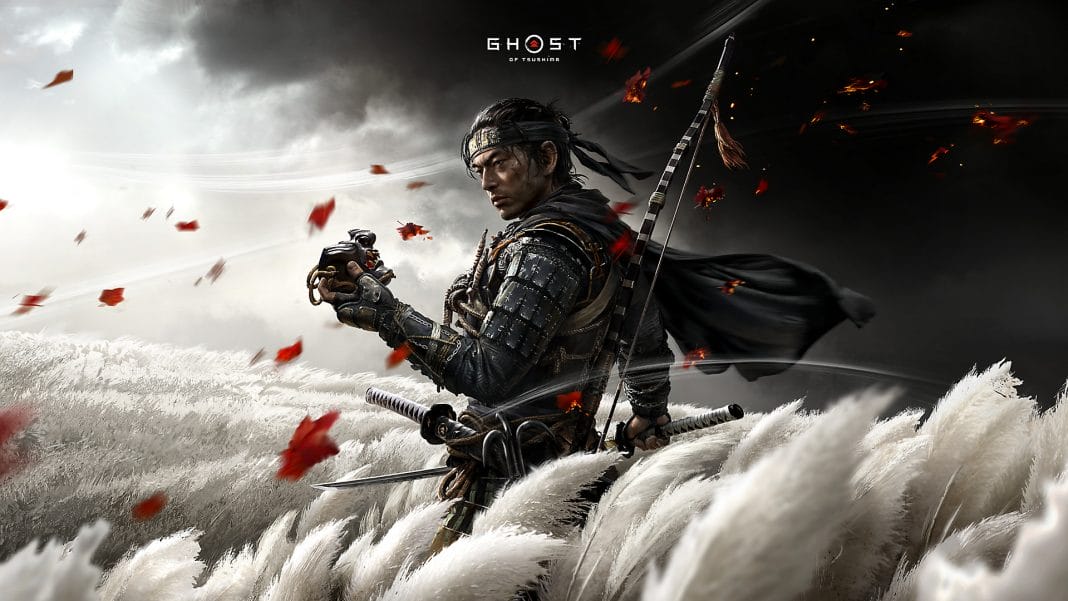After finishing Ghost of Tsushima’s 30 hour campaign on the PS4 Pro my first instinct was to keep playing. Sucker Punch Productions’ samurai-inspired open-world romp is by far one of the most immersive experiences I’ve had. From its serene, sprawling environments to its grounded story-telling, Ghost of Tsushima goes toe to toe with some of the best open-world games this generation and manages to best them where it matters.
Set in feudal Japan, Ghost of Tsushima has you in the role of Jin Sakai, a samurai. The Mongols led by Khotun Khan assault the island of Tsushima with designs on conquering all of Japan. Early on the samurai of Tsushima are nearly wiped out.
Instead of perishing on the battlefield Jin is rescued and plots to liberate Tsushima from its Mongol oppressors. Along the way you’ll ally with a host of intriguing characters, all with their own unique backstories.
From the always crotchety but never wrong archery genius Ishikawa to the humorous sake-peddling Kenji, they’re a varied lot that contrast Jin’s humdrum, almost vanilla past. As you play through a campaign whose story is rooted in realism and history, you’ll also come across Mythic Tales which on completion grant you new gear or skills. These add a fresh colour to the landscape due to their focus on Japanese folktales and the supernatural.

While the likes of The Witcher 3 and Assassin’s Creed Odyssey embraced myths and legends of their source material, incorporating them in a larger way, Ghost of Tsushima uses them sparingly. This goes a long way in creating an accurate facsimile while doesn’t stray into mythological power fantasy territory that others eventually do. It’s this approach that makes the game a lot more immersive and endearing than its contemporaries.
Mythic Tales aren’t the only side-missions in Ghost of Tsushima. There are Mongol camps to capture, a slew of shrines to uncover, and a host of quests to do for your allies. These are presented in a fashion that does not feel as overwhelming or bloated as other open-world games do, allowing you to focus on what you want when you want.
All of this is backed up by a slick combat system. Throughout the game, you’ll choose between doing things the way a samurai would such as attacking enemies head on with honour or using different tactics to take on the numerous foes in you’ll face like stealth and using poison. Regardless of your choice, the controls are up to the task. Be it swapping between smoke bombs and fire arrows or simply parrying attacks every single bit of the action is as responsive as it should be.
The swordplay demands a special mention as that’s where a bulk of Ghost of Tsushima’s ingenuity is. As you slice and dice your way through Mongol fodder you’ll soon realise that there are different enemy types. These include spear-wielders, shield users, and brutes to name a few.

In order to best them you’ll need to change your stance to let your katana break through their defence. You earn stances as you kill gold-plated enemies that are referred to as leaders or if you’re not upto it, you can observe them too. Or if you’re feeling ambitious you can stealthily observe them and then slay them to earn a stance sooner.
At the same time, successful hits earn you resolve which you can use to heal yourself or unleash devastating blows. This results in an almost rhythmic loop of dodging, swapping stances and getting critical stabs in all while managing consumable weapons like kunai (throwing daggers) and sticky bombs. It’s enjoyable and one of more addictive aspects of Ghost of Tsushima. The sheer number of ways to counter an enemy onslaught make even its toughest encounters a treat to play through.
Actual boss encounters usually play like Soulcalibur minus the flashy moves and ring outs. You can’t use your other weapons, just your blade. You’ll hold dear to the basics of swordplay making every slash, parry, and roll count all while trying to make sense of your opponent’s movement and range. It rewards caution, evading one attack almost always reveals that you’ve evaded a flurry of critical strikes, forcing you to wait for the right moment to land a hit.
All of it feels exceptionally satisfying and these boss fights bookmark significant moments in the game so you never feel like you’re running the gauntlet with them. Alternatively, they act as well-placed palate cleansers to keep things from getting stale. The main missions themselves are a mix of stealth (some of it compulsory though none as trying as the Mary Jane or Miles Morales sections in Spider-Man) and out and out combat across stunning vistas including some memorable moments like boarding a Mongol ship or storming a fort solo.

The fantastic moment to moment gameplay is backed up by a streamlined progression system. You won’t find an XP counter to worry about. Instead, completing most Tales nets you a set number of Technique Points while some of the easier quests do the bare minimum of taking you closer to earning one. Technique Points allow you to upgrade your skills such as being able to use your resolve to continue fighting (as opposed to staring at a game over screen) or chain together fatal assassination attacks.
Rather than overwhelm you with skill trees and numbers galore, the menus and levelling up in Ghost of Tsushima is cleanly represented, making it easy to understand what you can use your points for in order to cater to your playstyle.
Other parts of Ghost of Tsushima are equally pared down and it’s all the better for it. Given the timeline it takes place in, you won’t be beset by large confusing cities. Variety is brought in through Tsushima’s many biomes and small settlements that pepper the landscape, making for a less complicated albeit just as good looking game world that doesn’t feel like a burden to explore. There’s enough of an incentive to go off the beaten path too what with golden birds to follow or foxes that guide you to Inari shrines rewarding you with new loot.
Even navigation for instance is simplified, depends on where the wind is blowing in-game. Yes, to get from point A to point B is a simple matter of watching the direction in which the wind is blowing (indicated by its affect on the luscious amount of foliage that surrounds you) instead of clunky arrows or pointers. It works well for most part, barring one late game section where I found myself greeted with a ‘Return to Tale area’ notification complete with a countdown timer.

Not only are such messages immersion-breaking, they also are indicative of the situation Ghost of Tsushima is in. The game itself wants to be a new take on existing design conventions but finds itself falling back on some old tropes instead of trying to work around them.
Some examples of this are a bit more apparent, such as giving you a choice in how to reply when in conversation with certain characters. It feels hollow as it doesn’t really change the overall story in any meaningful way. Other issues are less major, the game’s final act (there are three as well as a prologue) seems to be on the shorter side compared to the first two while some locations like the gorgeous Umugi Cove feel underutilised.
Nonetheless, none of these problems are particularly annoying by any stretch. Throw in welcome options like a fantastic photo mode and the ability to prioritise visuals or frame rate, and you have one of the more feature-rich releases available.
On the surface, Ghost of Tsushima plays like this generation’s greatest hits however Sucker Punch has managed to infuse enough of its own influences and ingenuity to make it standout from the crowd with some impactful changes to how open-world games are made. And while not all of them hit the mark, they do enough to make Ghost of Tsushima well worth a recommendation.




